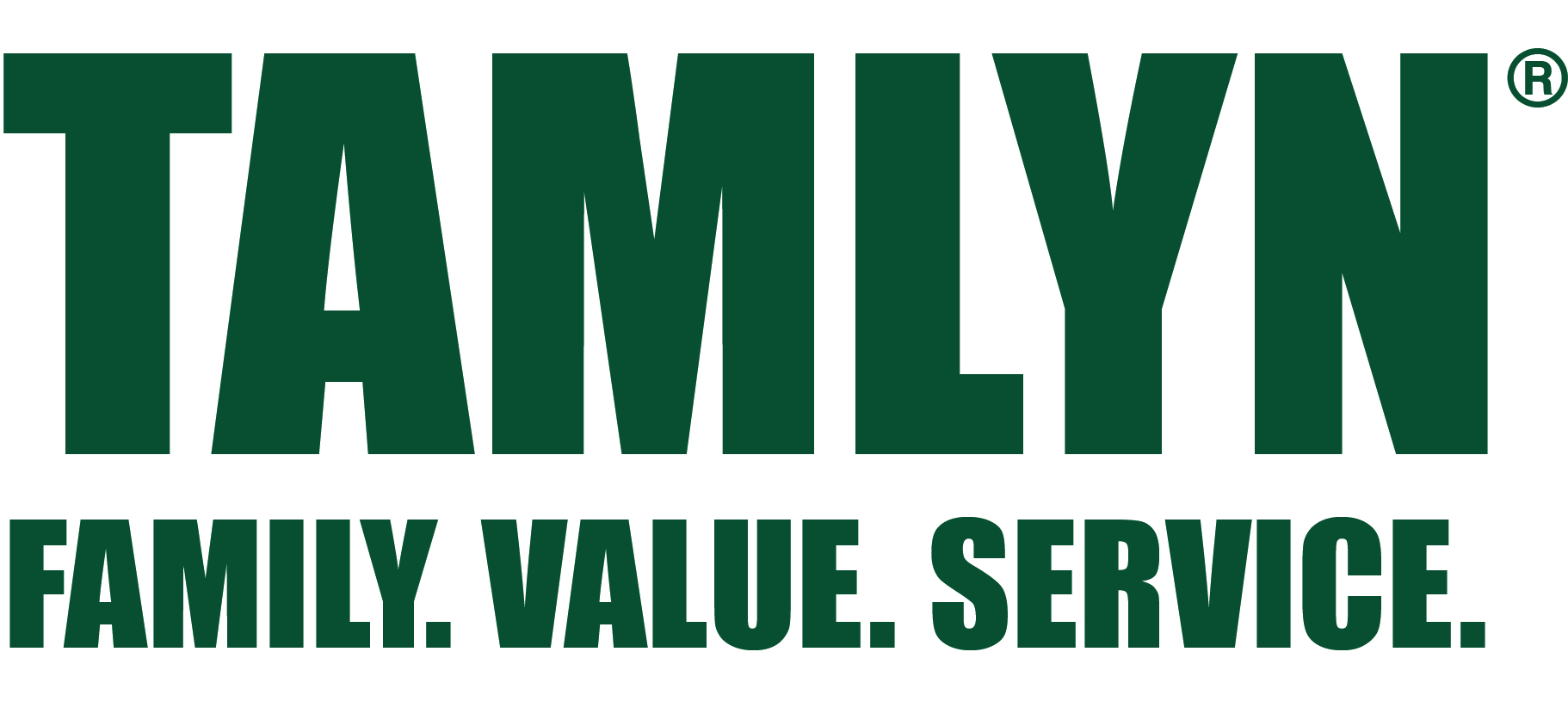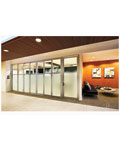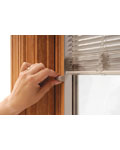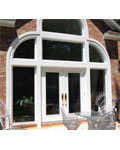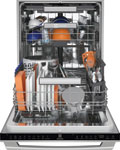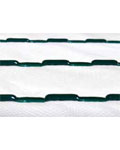This CE Center article is no longer eligible for receiving credits.
Signs of economic recovery are being observed in many areas following the recent recession. Financing is more accessible, the job market has improved, and construction is picking up again as a result. In particular, new or renovated multifamily housing has been documented as one of the most active building types under design and construction. While there seems to be a variety of reasons behind this activity, they all spell good news for architects engaged in this market. As commonly happens, lots of activity breeds lots of innovation. This is definitely true among architects but it is also true among product manufacturers and suppliers across a wide spectrum of building components used in multifamily housing.
Market Trends Breeding Innovation in Multifamily Housing
Statistics for American households from the U.S. Census Bureau have been analyzed and reported on recently in numerous business and professional publications. They document a clear trend for an increasing need for multifamily housing both now and in the foreseeable future. One important aspect to understand, however, is that this trend will certainly vary by geographic region and over time. When looking at a region such as the Washington, D.C. metropolitan area for example, the George Mason University Center for Regional Analysis has shown that new multifamily permits peaked there in 2012 and development slowed a bit as units were absorbed by the market. While they estimated 19,000 units to be delivered in 2014, they also identified a need for about 66,000 households to require multifamily housing in 2015. So while there may be some normal ebbs and flows, the trend there is still definitely on the upswing.
All of this is consistent with the work of several national organizations that focus on multifamily housing. The National Apartment Association (NAA, www.naahq.org) published a 2014 forecast indicating that across the 100 largest metropolitan areas in the U.S., completed apartment units are expected to climb to about 231,000 units in 2014. That is an increase over the 187,000 units brought to market in 2013 and a notable jump from only 78,000 completed new units when the market bottomed out in 2011. For context, the National Multifamily Housing Council (NMHC, www.nmhc.org), which defines a rental apartment building as one with five or more units, recognizes 17.3 million individual apartments currently operating in the U.S. They point out that nearly 89 million Americans rent their housing—almost one third of all Americans and over 14 percent of all households. The NMHC estimates that construction of apartment communities built between 2008 and 2013 added an average of 210,000 new apartment homes per year worth more than $32 billion annually and providing jobs to over 270,000 workers. From a market trend perspective, NMHC has determined that apartment living now attracts a wide variety of people including those who prefer to rent even though they could readily afford to buy. Citing Professor Arthur C. Nelson, presidential professor and director of metropolitan research at the University of Utah's College of Architecture and Planning, the NMHC indicates that in order to meet emerging housing demands between now and 2020, half of all new residences built will need to be multifamily rental units.
Rounding out the picture, an affiliate of the National Association of REALTORS, the Institute of Real Estate Management (IREM, www.irem.org) has noted that many investors have begun turning their attention away from prime residential development locations and instead are looking at urban fringe areas. These up-and-coming neighborhoods attract young, upwardly mobile renters and pedestrian commuters. This trend implies opportunities for the transformation of dubious urban areas into vibrant, attractive, sustainable, and thriving neighborhoods with a mix of multifamily housing and urban amenities. IREM has also recognized and embraced the trend of green buildings and sustainable design in multifamily housing that improves financial performance, boosts property values, and makes a positive environmental impact.
Within the context of these larger trends and responses, building design and construction firms have brought their own creativity to multifamily housing by using a variety of available products and materials in innovative ways.

Photo courtesy of Pella EFCO Commercial Solutions
Multifamily housing has been one of the most active parts of the design and construction portion of the economy in the years since the recession.
Improved Construction Techniques
Owners and developers have always wanted good construction quality and good economic value. Increasingly, particularly with condominium-type projects where the users become the owners, there are also demands for energy efficiency and long-term sustainability even beyond minimum code requirements. In multifamily housing, meeting these needs economically has meant improving the design and construction of the building envelope, particularly in exterior walls. It is also not surprising that various types of wood-framed construction have been used for these purposes when allowable by code. Standardized construction methods using readily available materials coupled with general time and cost savings are often cited for this choice.

Photo courtesy of Simonton Windows & Doors
Multifamily housing is taking many forms and appealing to people with different income levels, in different localities, and in different living arrangements for a whole variety of reasons.
When looking at the construction of framed walls, updated codes have recognized that good energy performance is about more than U-factors or R-values and requires attention to properly managing water, air, and moisture in those walls. Each of these are addressed in different ways. Controlling rain water involves the “four D's” of water managed design: deflection of water away from the wall, drainage of water that does get in, drying of the wall materials, and durability of all components. By contrast, controlling moisture, which is water in a vapor state, involves preventing it from diffusing through materials or infiltrating by moisture-laden air into a wall assembly. To assure proper performance, the codes have focused on three particular areas that are intended to improve the construction of framed multifamily walls. Specifically, they call for the proper use of vapor barriers, air barriers, and water-resistive barriers (WRBs), all discussed further as follows:
Vapor Barriers/Retarders
Codes require framed walls to have a vapor barrier or retarder installed on the “warm” side of a wall. The intent is to prevent gaseous water vapor from diffusing directly through building materials into a wall assembly. The requirements will vary by location such that in northern climate zones, an interior barrier is required while in southern climate zones it needs to be on the exterior. The type of barrier/retarder also varies by climate zone based on the amount of permeability (perm rate) they provide. There are three classes identified simply as Class I (.01 perm or less), Class II (0.1 – 1 perm), and Class III (1 – 10 perms). As a practical matter, the material used for this barrier can vary by location from low-permeability plastic sheeting, to kraft paper facing on insulation, or vapor retardant interior paint.
Air Barriers
Air barriers are addressed separately in the codes and are intended to be used to control the infiltration and exfiltration of air through a wall assembly. Unwanted air flow in building walls pushes out conditioned air and allows unconditioned air to enter, thus requiring additional energy to heat or cool the interior. Air barriers help lower energy requirements by reducing this air exchange in buildings and have been shown to save as much as 15 to 20 percent on space conditioning costs. Air barriers are also important in managing vapor or moisture since they can prevent moisture-laden air from penetrating into wall assemblies. If this moisture is not stopped, it can be absorbed by the materials or condense into water drops. This increases the moisture content of building materials, which can then deteriorate, compromise the structure, and potentially cause health concerns from mold and mildew. Effective air barriers reduce the possibility of moisture entering wall assemblies in the first place, thus reducing the moisture accumulation and damage potential.

Photo courtesy of Pella EFCO Commercial Solutions
Double glazed fiberglass windows with low-E glass were a good fit for the Beranger Condos in Gresham, Oregon.
Water-Resistive Barriers (WRBs)
In addition to vapor and air barriers, building codes require water-resistive barriers (WRBs) under all cladding systems to prevent water penetration into building assemblies. WRBs can be as simple as traditional asphalt-impregnated building paper or be as multifaceted as a high-performance, non-woven building wrap made from a synthetic sheeting material. The advantages of a modern synthetic wrap product over building paper include a WRB that is more breathable, more durable, and more easily sealed along the seams to create a continuous barrier over a variety of materials and in different configurations. Further, if the synthetic WRB is breathable and non-perforated, then it can also double as a continuous exterior air barrier, meeting the code requirements for both in a single layer.
When a high-performance building wrap is used as the WRB in a multifamily housing project, it takes advantage of several innovative advances in their development. First, as an engineered product, it creates a weather barrier behind exterior cladding to protect the sheathing and reduce water intrusion into the wall cavities. This is important in all wall systems since all cladding will likely allow some degree of water intrusion at some point. It is also particularly important in rainscreen assemblies where water is expected to enter behind a cladding material and is allowed to drain away. Second, as a vapor permeable or breathable product, WRBs allow water or moisture to escape, thus allowing any damp or wet materials to dry in a relatively short amount of time. During this drying, WRBs maintain their water resistance because they are constructed with pores that are large enough to allow moisture as a vapor to pass through but too small for water as a liquid to pass. Third, as an air barrier, a WRB will be an energy-efficient means to stop air infiltration and exfiltration through walls.

Photo courtesy of Tamlyn
Continuous water-resistive barriers (WRBs) are required by code and provide improved construction performance.
A significant innovation has come about by recognizing that WRBs can be enhanced to very effectively serve as a drainage component that contributes directly to the longevity and sustainability of the rest of the wall. It has been noted that traditional construction techniques such as masonry walls manage water and moisture by using a space or gap between the sheathing layer and the masonry veneer (cladding) to allow any accumulated water to exit through weep holes. Similarly, rainscreen installations use a gap between the cladding and the sheathing to allow water to drain away harmlessly. In any wall construction, failure of water to drain away can damage the cladding, or worse, the rest of the wall assembly. As such, there has been an interest in providing a similar drainage gap between building wraps and cladding.
The conventional means to create a gap in a framed wall system is to use furring channels or strips. This will work, but requires more labor, time, and cost as a result. One innovative alternative that has become recognized as a best practice solution is to use a drainable WRB building wrap that provides its own integrated method of drainage. For example, at least one manufacturer creates this gap by bonding 1.5-mm propylene spacers to a high-performance WRB building wrap. This depth is large enough to provide a true drainage space between the sheathing and cladding material. In essence, it acts as a full rainscreen system in miniature, without the added labor or cost. Further, it will work with all types of cladding systems, particularly those that can be moisture sensitive, such as wood or fiber cement siding.

Photos courtesy of Tamlyn
Continuous spacers provide an intended drainage gap on a synthetic, non-woven, breathable WRB.
When specifying WRBs/building wraps for multifamily housing projects, it is important to recognize that there are literally dozens of building wrap products available with wide variations in performance and cost. While most are made from polyethylene or polypropylene plastic, they can also vary in water resistance, drainage efficiency, water vapor transmission or breathability, ability to impede air flow, durability, tear resistance, cold weather flexibility, flammability and smoke developed ratings. Selecting a WRB that excels in all of these areas will assure best results overall. Beyond that, however, it is important that the WRB can be sealed properly and fully along the seams without undue penetrations from staples or nails. Some manufacturers offer full sealing systems that avoid the use of nails and staples and instead use a compatible adhesive, sealant, or tape.
Equally important are the details of how the WRB deals with openings in the wall such as doors and windows. Being able to flash and seal the WRB properly with window and door flashing materials will assure that water draining down the face of a drainable WRB will flow away properly and not behind other building elements into the wall.
Optimizing Performance with Windows
Windows are an integral and important part of any multifamily wall system and as such, they need to address a variety of design criteria. The desire to provide views and natural light needs to be balanced with energy efficiency in the wall system. Energy costs need to be contained by controlling air drafts, solar gain, and heat loss. Occupant comfort needs to be addressed by avoiding air drafts, glare, and overheated spaces. Increasingly, particularly in urban areas, windows play an important role in resisting unwanted noise from outside sources as well. In coastal areas, resistance to the elements and weather including hurricanes becomes a factor. Developers are of course concerned about all of these things since properly addressing them can lead to higher rents in rental properties or purchase prices in condo units. Given all of these various design and user needs, it is not surprising that there are a lot of options and choices in window products being used in multifamily housing that take advantage of the most current technology and product design innovations.
Envelope Analysis
In order to fully account for the impact of windows on building performance, they should be looked at as part of an overall envelope analysis with an emphasis on the contributions offered by glazing types, air sealing, occupant comfort, and improved aesthetics. This is an important step on any project but especially on the renovation of existing buildings, particularly if the building is being converted from some other use (i.e. warehouse, school, etc.) into multifamily housing as has become very popular in many areas. This analysis can be done in-house by architectural firms using available computer modeling software or by working with window manufacturers who have customized software to analyze the options of different window systems in a given building envelope system. Either way, a baseline building can be modeled and the relative changes can be compared by modeling specific window designs, types, and options.
Testing and Standards
Pre-glazed window products are categorized in four standardized classes as identified by the American Architectural Manufacturers Association (AAMA), which is a non-profit trade association of manufacturers and others in the fenestration industry. Using the classifications of R, LC, CW, and AW, windows can be selected that are manufactured and tested to perform under increasing weather and structural demands related in part to the height of a building.
The National Fenestration Rating Council (NFRC) has developed the widely accepted NFRC Rating System to identify the overall energy performance in windows. This uniform rating and certification process quantifies the key elements of fenestration performance starting with the total product thermal transmittance (U-factor) of the window unit not just the U-factor of the glazing. It also identifies the solar heat gain coefficient (SHGC) and visible light transmittance (VT) of a particular window unit so those important factors can be identified. In some cases, they also identify the air leakage (AL) and condensation resistance (CR) of a window product as well. In short, all of these elements can be specified according to the design needs of a multifamily building and verified in the field by the factory-applied NFRC certification label.
NFRC certification is also recognized as the only means for a window unit to qualify for ENERGY STAR certification. The ENERGY STAR label is awarded by the U.S. Environmental Protection Agency to products that achieve superior energy performance compared to baseline minimum requirements. For windows, this means that the U-factor and SHGC values need to meet strict minimum levels under NFRC certification in order to earn the ENERGY STAR label. The levels were first established in 1998 and have been updated several times with the most recent standards effective in January of 2010. Updated performance levels for windows are anticipated to take effect in 2015.
Among the biggest difference between manufactured windows and their performance is the material used for the sash and frames. The common choices for multifamily housing are summarized as follows:
Clad Wood Windows
Wood is one of the best thermal performing materials to use in a window frame system since it provides relatively high thermal resistance and excellent insulating ability. As a result, thermal bridging through the frame is reduced compared to metallic frame materials without thermal breaks. The wood used in the manufacture of window units is selected for strength and a low coefficient of thermal expansion. But perhaps the most dominating advantage of wood is its aesthetic appeal particularly on interiors. Windows made entirely of wood may be preferred in regions where wood construction prevails and exposed wood finish materials are popular. However, this will require ongoing care and maintenance to protect the wood from environmental or insect damage. Hence, wood windows clad on the exterior with a low-maintenance material such as aluminum are more commonly specified, particularly on multifamily projects. This creates a virtually maintenance-free condition on the outside while retaining the appeal of wood on the inside. Clad wood windows are often used where design flexibility is desired, where the warmth of wood will complement other interior woodwork, where low-maintenance exteriors are important, or in older existing buildings that require an authentic look.
Vinyl Windows
Solid vinyl framed windows have gained in popularity in recent years since they are comparatively lightweight, have been shown to be as thermally efficient as wood, and are often the most economical option available. Typically, vinyl windows do not corrode or rust and the integral homogeneous color does not wear away, blister, crack, peel, or pit. Some manufacturers limit colors to lighter ones such as white or almond since their darker colors can promote heat buildup in hot climates that can warp or damage the vinyl. Others have developed the next generation of vinyl windows that offer darker colors along with deeper frames, more insulating air chambers, foam insulation in the frame, triple glazing, and other options. These enhancements provide greater structural performance, more design flexibility, and better energy efficiency. Some manufacturers also qualify for the AAMA Gold Label Certification Program or the WDMA Hallmark Certification Program. These programs represent air, water, and structural testing for windows and doors. AAMA also offers a silver certification which only requires thermal testing. High-quality vinyl windows are particularly well suited to situations where excellent energy efficiency and low maintenance is needed within a budget, thus offering an overall good value.

Chart courtesy of Simonton Windows & Doors
This chart shows the comparative energy loss through different window frame materials. Note that aluminum is shown without a thermal break—with a thermal break it performs much better.
Fiberglass Windows
A fairly recent addition to the window market, fiberglass framed windows consist of glass fibers and a resin that binds those fibers together. The well-known tensile strength of fiberglass gives these windows high levels of durability and impact resistance. They are better suited than vinyl to handle a wide range of temperature extremes from -40 degrees F up to 200 degrees F. The frames tend to be very energy efficient and in some cases additional insulation can be added inside the frames. Durable finishes are available with good chalk resistance and fade performance and are suitable for use in harsh environments. Fiberglass framed windows are mostly used in multifamily buildings where price, durability, and low maintenance are important and where higher-performance aluminum windows may be too expensive.
Aluminum Windows
Aluminum has been a popular choice of window manufacturers for quite a while due to its light weight and excellent strength. It can readily be formed into complex extruded sections that are strong and can efficiently achieve desirable weathering and operating characteristics. These aluminum extrusions easily provide tracks, drips, baffles, and grooves for weather stripping. These pieces can then be cut and fabricated into window units of many different shapes and sizes. Further, the appearance of aluminum can be varied by selecting from a wide range of commonly available anodized and painted finishes. When complete, the final product can be decorative, strong enough to be used in large openings, and provide a low-maintenance solution.
Aluminum does have a higher coefficient of expansion compared to other materials so that needs to be allowed for in the detailing. Its high rate of conductivity also makes it prone to thermal bridging and unwanted heat transfer. However, the current focus on energy efficiency has prompted manufacturers to increase the energy enhancement of aluminum frames through enhanced thermal breaks and other measures to limit or reduce thermal bridging. Multifamily buildings that require added resistance to wind and rain, strength, durability, and design flexibility are the most suitable application for aluminum windows. They are also popular where low maintenance is desired in moderate environments and in buildings where function and performance are important. Aluminum storefront, curtain wall, and entrance systems may also be appropriate to consider.

Photo courtesy of Space Plus, a division of The Sliding Door Company
Loft-style apartments can benefit from the flexibility and versatility of movable interior partitions that allow privacy when needed and openness when desired.
Window Design Innovations
Window manufacturers continually seek to provide options and innovations in their products that can be considered in multifamily housing projects. Custom window sizes and window shapes are available for virtually any window type or style in addition to standard offerings. This is based on the use of a range of standard frame and sash profiles that can be custom cut and sized as needed to create a desired look and performance level. Specifying custom profiles will not likely be cost effective for a single project, but given the range of options already available, should not be needed. Glazing options run the full gamut and include a wide variety of coatings and glass treatment in double and triple glazed assemblies. Laminated and impact-resistant glass is also available as well as sound-deadening glass to address specific needs.

Photo courtesy of Pella EFCO Commercial Solutions
Innovative triple glazed aluminum-clad wood windows with betweenglazing blinds were used at Morgan Park Place near Nashville, Tennessee.
Manufacturers also have some specific options available to meet particular needs in multifamily housing units. For example, where safety is a concern in operable windows in upper stories, interior safety guards designed to match the window are available to help prevent children or adults from accidently falling out of the building. Similarly, from an aesthetic standpoint, most manufacturers offer choices in decorative grilles or even panels that are designed to work with their particular window system. Some are adhered directly to the glass or made to snap in and out but others are located between the glazing layers, keeping them free from dust and making it easier to clean the glazing.
A functional option in double or triple glazed window units is to place adjustable mini-blinds or fabric shades between the layers of glass. This has been done very successfully in multifamily housing projects where goals included energy efficiency, aesthetics, durability, and comfort. In these cases, the blinds or shades are protected between the layers of glass so they are not subject to being damaged the way exposed blinds or shades could be. From an indoor environmental quality standpoint, the enclosed blinds also don't accumulate dust the way exposed blinds do, making for a cleaner condition without allergens settling on the blinds. In products that use a sealed double glazing layer and a moveable third layer, it is easy to change or swap out shades or blinds for different fabrics, colors, etc. As an operable layer, the blinds or shades can close to block unwanted sunlight in warm seasons and open to allow passive heat gains on cold days. Currently, some of this operation is done manually, but electronic automation is also available. Automated blinds or shades in a multifamily building can be programmed to open and close on a schedule to help reduce energy use and provide occupant comfort.
Clearly there are many window choices and product options that architects can take advantage of. Part of the key to successful selection and design is to communicate directly with manufacturers to convey the specific design and performance requirements of a project. Then by asking the appropriate questions, architects can work with manufacturers to understand the particular choices, options, and variations available.
Design Innovations for Creative Interiors
The market trends calling for more multifamily housing are also calling for more creative interior layouts. This is particularly true for housing units (such as loft-style apartments) that are seeking to provide marketable options in less square footage or for buildings that are being adaptively re-used and renovated. One innovative design approach has taken the form of creating flexible spaces that optimize living arrangements through the use of movable or sliding partitions.
Commonly available, movable partitions can be a real design asset in that they allow rooms to open to up to each other for more spaciousness when desired or allow spaces to be closed off and private when required. This creates interior spaces and floor plans that are flexible in size, functional to accommodate different uses, and lockable when needed. Further, since most movable partitions of this type include glazing, then light is allowed to penetrate between spaces while still creating a separation with the ability to control the light by treating the glass. All of these design traits make them very beneficial for individual apartments as well as communal living environments such as senior living centers.
Most movable partition systems are based on using aluminum framed panels that slide along tracks either attached to other construction or secured as free-standing arrangements. Typically the weight of the panels is delivered to a roller on the panel bottom that glides along a track system on the floor while the top end of the panel is guided along an upper track. If a floor track cannot be accommodated, then top-hung suspended systems may be appropriate. Either way, the systems can be designed to be fully compliant with handicapped accessibility standards by keeping the floor flush or the track to a height of one half inch or less.

Photo courtesy of Electrolux
Multifamily kitchens need to suit the lifestyles of the occupants including ways to save time and resources.
From a space required standpoint, most sliding partitions can be constructed independently from fixed walls without the need for opening up a field constructed wall to create a recessed pocket. Rather, they can be set up on a multi-line track that allows the sliding partitions to bypass one another and stack up tightly against a wall beside the opening. This sliding wall solution ultimately saves money, saves time, and perhaps most importantly to the design, saves space. From an access standpoint, sliding panels can be used as the means to enter and exit the enclosed area or, as an alternative, a swing door can be added to a panel and used for access.
When choosing to incorporate sliding, movable partitions into multifamily housing units, there are numerous options available that can be selected to create the best solutions for a particular space. In most cases, the size of the panels is completely customizable from small window-sized units up to full-height wall panels of 10 feet or so with the possibility for transoms above if needed. Most panels are square or rectangular, but intermediate mullions or muntins can be added to create a variety of geometric patterns within the border lines of the aluminum frames. This is both a safety feature and aesthetic benefit since the most common choice is to use glass of one type or another within the frame.

Photo courtesy of Space Plus, a division of The Sliding Door Company
Room dividers and closet doors can all work together to create a coordinated design for multifamily housing units seeking innovative solutions.
Selecting the final finished appearance of the movable panels involves several choices. The first is the frame finish. Most common aluminum finishes are available that create silver, white, black, or grey colored frames. Some manufacturers also use a high-pressure finish system to create a permanent stained wood grain appearance in the aluminum. Hardware needed to operate the sliding mechanism can be selected from common choices that are necessarily recessed or otherwise designed to allow the panels to slide uninterrupted. Handicapped-accessible hardware is available as well as fixed pulls, etc. in popular finishes compatible with the frames. Within the frame a number of glazing types are possible. Clear glass may be great for some situations and opaque colored glazing may be preferred in others. However, panels don't have to be uniform unless that is the design intent. Rather, panels can have portions that are clear, opaque, or even translucent within a range of geometric patterns. The coloring of translucent and opaque glazing can be variable within common ranges of white, gray, and black or other colors. In this manner, the degree of privacy and light transmittance can be controlled while contributing to the overall interior design scheme.
From a sustainability standpoint, the use of interior movable partitions as described can result in smaller, more efficient, but more desirable living units that require less energy and resources overall. As a product, they can be re-used and relocated within a building or moved to other buildings, forgoing the need for new materials. When they do reach the end of their useful life, the aluminum and glass can be salvaged and recycled. Overall, they offer a truly durable, long-lasting, sustainable solution that helps control construction costs.
Addressing Lifestyle with Time-Saving Amenities
The trends cited in multifamily housing indicate a diversity of users with a variety of lifestyles. Few rooms in a housing unit reflect that lifestyle more than the kitchen. Households that do a lot of cooking look for more kitchen workspace and higher-quality amenities. Those who choose to downsize to smaller living units may only cook for themselves and rely on local restaurants or bistros for entertaining guests. Anyone with a busy schedule will want high quality and plenty of time-saving features. Appliance manufacturers have recognized these needs that have played directly into the updated designs of several kitchen appliances as well.
Dishwashing Appliances
Residential dishwasher design has increasingly been influenced by professional grade dishwashers to provide better performance, use less energy, less water, and need less time to get dishes clean. Most notably, dishwasher manufacturers currently recommend that there is no longer any need to pre-rinse dishes in a sink. Rather they can be taken from the table, scraped of any loose food items, and placed directly into the dishwasher. This saves considerable time and water usage. Once loaded, wash times can be as short as 30 minutes thanks to improved washing technology and refinements that assure all loaded dishes get cleaned. Among the most significant innovation in dishwashers is the use of soil sensors inside the unit that incorporates technology to automatically adjust the cycle time based on how much cleaning is needed for a particular load of dishes. Shorter cycle time means the dishwasher runs for less time and therefore consumes less energy and water too.

Photo courtesy of Electrolux
The latest generation of dishwashers provides improved performance and many control options that allow users to save time, energy, and water.
A significant portion of the energy used by dishwashers is actually the energy required for heating the water they consume, since almost all dishwashers on the market use internal booster heaters. That is actually a good thing, because it allows household domestic hot water heater temperatures to be turned down to around 120 degrees, instead of the higher temperatures usually desired for dish washing. The lower water heater temperatures mean less energy is used on an ongoing basis with the higher temperature created only for the intermittent needs of the dishwasher. Selecting a unit that meets or exceeds the ENERGY STAR® rating requirements for both energy and water usage will enhance the energy savings even more.
There are some other options and choices in selecting a dishwasher that will make a difference on overall performance and ease of use. For times when dirty dishes sit overnight, a dishwasher with a rinse option feature will typically use a fraction of the water needed to hand rinse. Sizing the appliance to suit the household size will promote running full loads whenever possible which is helpful since they can use about the same amount of energy and water regardless of the number of dishes inside. Further, selecting units that have a no-heat drying option can still give good drying results using notably less electrical energy.
Cooking Appliances
In multifamily housing, it makes good sense to identify the best-performing energy source for a specific cooking appliance. It may also be problematic or expensive to provide natural gas. Fortunately, many improvements in electrical cooking appliances can actually favor them over gas-fired kitchen appliances. A particularly innovative technology in this regard is the use of electric induction elements in cooktops and range tops. The difference between conventional electric cooking and induction cooking is dramatic. Conventional appliances use large electric resistance coils to produce raw heat that radiates up to a pan above thus heating it and the surrounding surfaces at the same time. By contrast, induction elements use electromagnetic energy that is focused directly on the pan, placing heat specifically where it is needed and not on the cooktop surface. When the pan is removed, there is little or no lingering heat on the cooktop because it was never heated up in the first place. As a result, induction cooking is very energy efficient, using significantly less energy than other standard cooking elements. In fact, in a comparison of different types of cooking systems, induction cooking was found to be 20 percent more efficient than typical radiant electric, and 70 percent more efficient than gas.
Of course, many people who cook often indicate that they like the quick response to adjusting temperatures with natural gas. However, it turns out that induction cooktops or ranges are actually more responsive than natural gas. Heat levels can be instantly adjusted from a delicate simmer up to a high setting that can boil water in as little as 90 seconds. Further, different preset touch settings on the control panel can provide a level of digital heat responsiveness not found in other cooking appliances. Since the surface doesn't get hot, they can be cleaned up quickly and easily in case of spills.

Photo courtesy of Electrolux
Induction cooktops and ranges are among the best innovations in cooking appliances in recent times—they direct electromagnetic heat energy to the metal pans and not to the surface of the appliance.
Electric induction cooking appliances are easy to work into multifamily designs since they don't require any special electrical work—they can be connected to a standard electric range outlet or junction box. They are equally easy for users since no special cooking utensils are needed—any metallic pot or pan works just fine.
If a kitchen design calls for a stand-alone induction cooktop, instead of a range, then built-in wall ovens are an option. These versatile appliances can improve the work flow of a kitchen by being located according to their anticipated use and sized to suit the living unit. Choices in features and types will impact energy performance, but they also offer more options to suit the lifestyle of the occupants.
Convection ovens save time by using an internal fan to move heat inside the oven. They can average 20 percent more energy efficiency than standard ovens because the heated air is continuously circulated around food meaning heat is distributed more evenly, and cooking time can be decreased. Built-in microwave ovens are a known and expected time saver but they also generally use one-half to two-thirds as much electricity as a conventional oven, particularly when used for reheating small portions. In all of these cases, because less heat is generated in the kitchen, residual savings may accrue from reduced air conditioning loads in the unit.
Conclusion
Multifamily housing is making up a very large part of total building construction across the U.S. and Canada and is expected to do so for some time to come. Architects who recognize the opportunities provided and the readily available innovations on the market can create dynamic, timely, and appropriate designs that address the lifestyles of occupants and the budgets of the owners. At the same time, they can also readily achieve high performance that is sustainable over the long term.
Peter J. Arsenault, FAIA, NCARB, LEED AP, is a nationally known architect, sustainability consultant, technical writer, and continuing education presenter. www.linkedin.com/in/pjaarch























